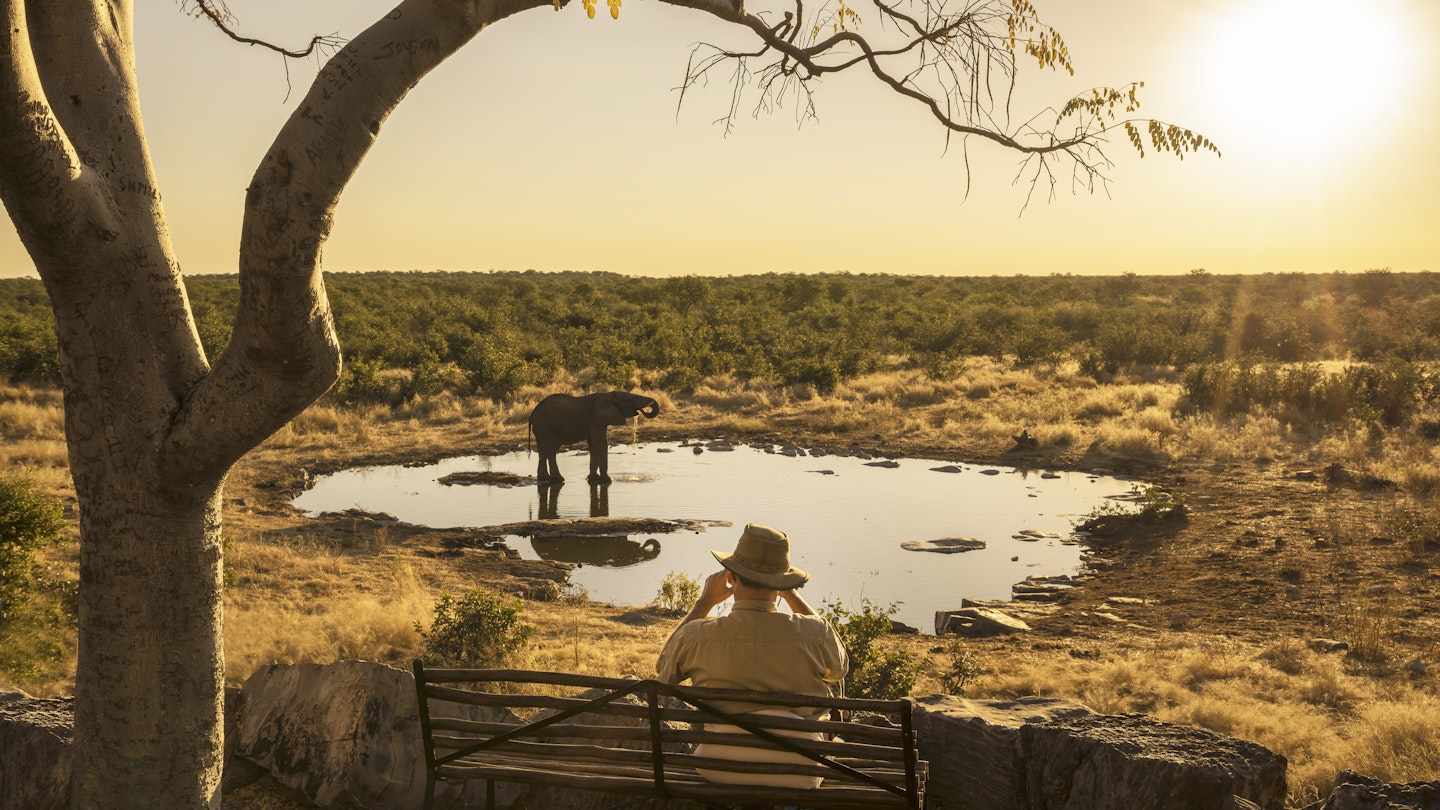Essential Tips for Exploring Namibia
Vast and sparsely populated, Namibia is full of otherworldly desert landscapes and wildlife that has adapted to some of the harshest conditions on the planet.
Its well-maintained roads, good tourism infrastructure, and magnificent desertscapes make the country a prime destination for adventurers, families, or anyone intrigued by offbeat destinations.
While touring Namibia is generally predictable and hassle-free, here are some tips to keep in mind when planning your journey.
1. Self-Drive is One of the Best Ways to Explore
Namibia features a handful of tarmac roads as well as an extensive network of mostly well-maintained gravel roads. These factors, coupled with excellent camping facilities nationwide and the option for fully equipped rental vehicles, make self-drive itineraries easy to navigate. A lack of public transportation to many intriguing areas further solidifies self-driving as the most practical option for many travelers.
2. Budget for a 4WD Vehicle with High Clearance
During your explorations, you will likely need to veer off the tarmac, making it worthwhile to budget for a 4WD rental with high clearance. Although sedan-type vehicles can manage main routes, the additional traction and height provided by 4WD vehicles significantly enhance comfort on Namibia’s long distances and rough terrains. Additionally, it is advisable to arrange for extra tire and windscreen coverage through your insurance, ensuring a safer adventure.
Regardless of your vehicle choice, remember to allocate ample time for your travels, as journeys in Namibia often take longer than initially expected—especially since you will likely want to stop frequently for photos. On gravel routes, a maximum speed of 80 kph (50 mph) is deemed safe, with more realistic speeds closer to 50 kph (30 mph) in remote regions.
3. Enjoy Traffic-Free Drives
Namibia’s beauty is reflected in its sparseness, offering a sense of expansive space. It is common to drive for hours without encountering another vehicle, immersing yourself in stunning open panoramas that stretch to the horizon. Make sure to carry extra water and food, and refuel whenever possible. If travelling with younger children, bring snacks and activities to keep them entertained, while planning days with minimal driving.
4. Most Nationalities Don’t Require a Tourist Visa
For itineraries lasting less than 90 days, most nationalities do not need a visa to enter Namibia. On arrival, visitors will receive a complimentary Visitor’s Entry Permit, which is tailored to your stated itinerary. It’s wise to request additional days at the outset in case your travel plans change. Ensure that your passport is valid for at least six months beyond your stay, with enough blank pages for entry and exit stamps.
5. Life Abounds in Namibia’s Barren Landscapes
While Namibia’s landscapes may appear empty, they are teeming with life. Etosha National Park serves as the country’s primary wildlife-viewing destination, featuring everything from small insects to large desert-adapted elephants and rhinos. Namibia’s wild Atlantic coast is home to thousands of Cape fur seals and large flocks of flamingos, as well as colorful patches of lichen and the ancient Welwitschia mirabilis plant in the desert.
One of the most fascinating aspects of visiting Namibia is learning about how these plants and animals adapt to thrive in such harsh conditions. If you choose to camp, rooftop tents—which can be arranged with your vehicle rental—are optimal for keeping you elevated above wildlife encounters.
6. Bring a Jacket for Chilly Evenings
With approximately 300 days of sunshine annually, Namibia experiences high temperatures year-round. Daytime highs can reach 40°C (104°F) during summer and generally hover around 25°C (77°F) in winter. Nights can become quite cold, especially in highland areas like Windhoek, where temperatures may plummet to freezing during the coldest months from June to August. A light jacket will be valuable for those early mornings and cooler evenings.
Additionally, the coast and Namib desert represent the driest regions, where rare rains may occur. Instead, coastal fog, driven by the cold Benguela current, rolls in many mornings, providing hydration to the local flora and fauna. The rainiest area is the northeast, characterized by its waterways, receiving between 50 to 60 cm (20 to 23.5 inches) of rainfall yearly, primarily falling between January and March.
7. Namibia is a Healthy Travel Destination
A yellow fever vaccination is required only if arriving from a location with a risk of transmission. It is advisable to consult health organizations like the CDC for the latest travel health requirements. The tap water in Namibia’s major towns is generally safe to drink; however, many visitors opt for purified water, available for purchase in 5-liter jugs for refilling personal bottles. Malaria is a risk primarily in the northern and northeastern regions during the wet season from December to March.
8. Stay Aware of Your Belongings
Though Namibia is relatively peaceful and stable, economic disparities exist. Therefore, it’s crucial to stay aware of your surroundings and keep an eye on your possessions, especially in urban areas such as Windhoek where petty crime can occur. Be cautious of scams, where an accomplice may attempt to distract you while targeting your belongings.
While driving in the city, keep your doors locked; don’t leave valuables in your vehicle while parked. When using credit cards, ensure you keep your card visible to avert potential cloning. On city streets and parking lots, consider utilizing parking attendants who offer to watch over your vehicle for a small fee.
9. Utilize Reputable Private Taxi Services
If you do not intend on renting a car, shared taxis offer a budget-friendly and convenient means of transportation within cities like Windhoek, Swakopmund, and Walvis Bay. While these taxis must possess government registration, be aware that unofficial “pirate taxis” might operate alongside them.
Rather than hailing taxis on the street, request your accommodation or tour operator to recommend reputable taxi services. During cab rides, avoid placing belongings next to open windows to prevent theft at stoplights.

This content was first published on Sep 9, 2022, and last updated on Oct 16, 2023.




